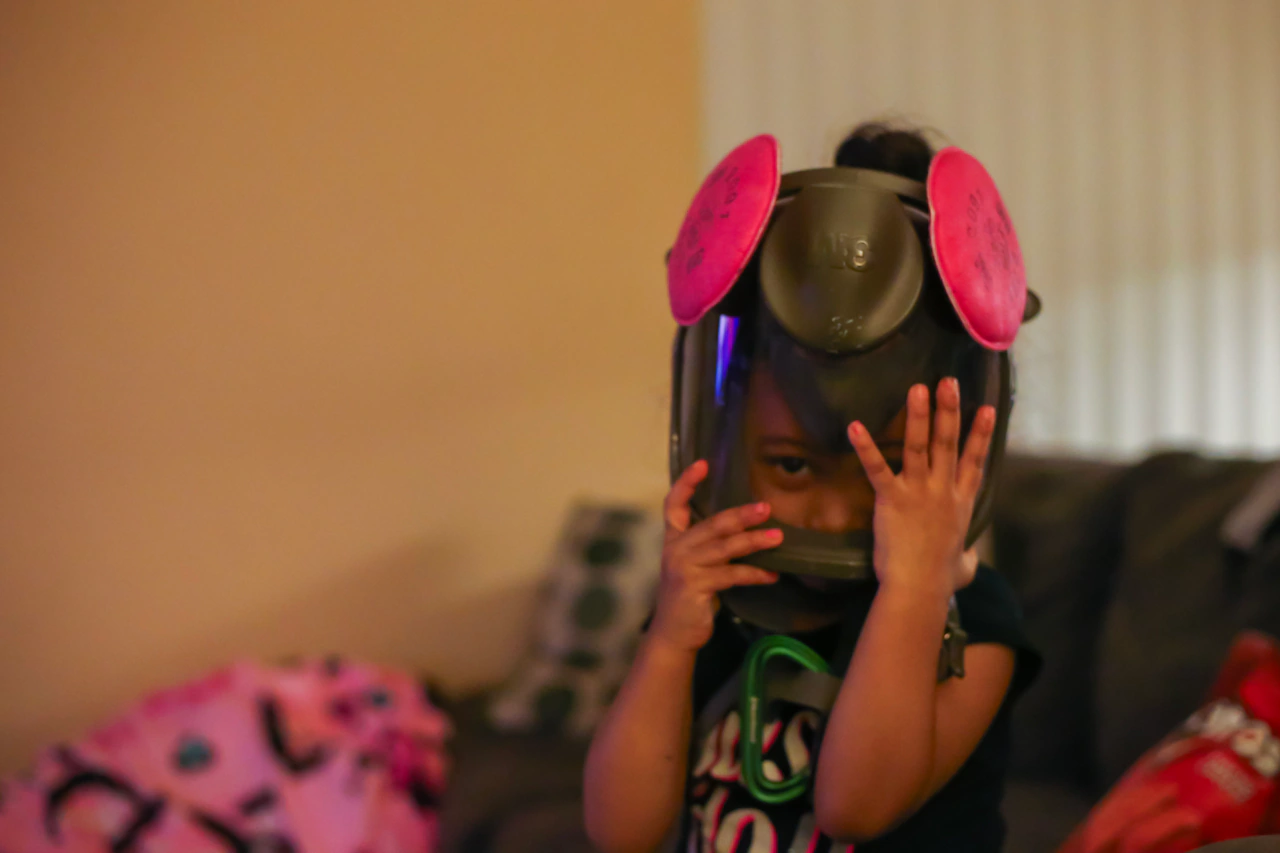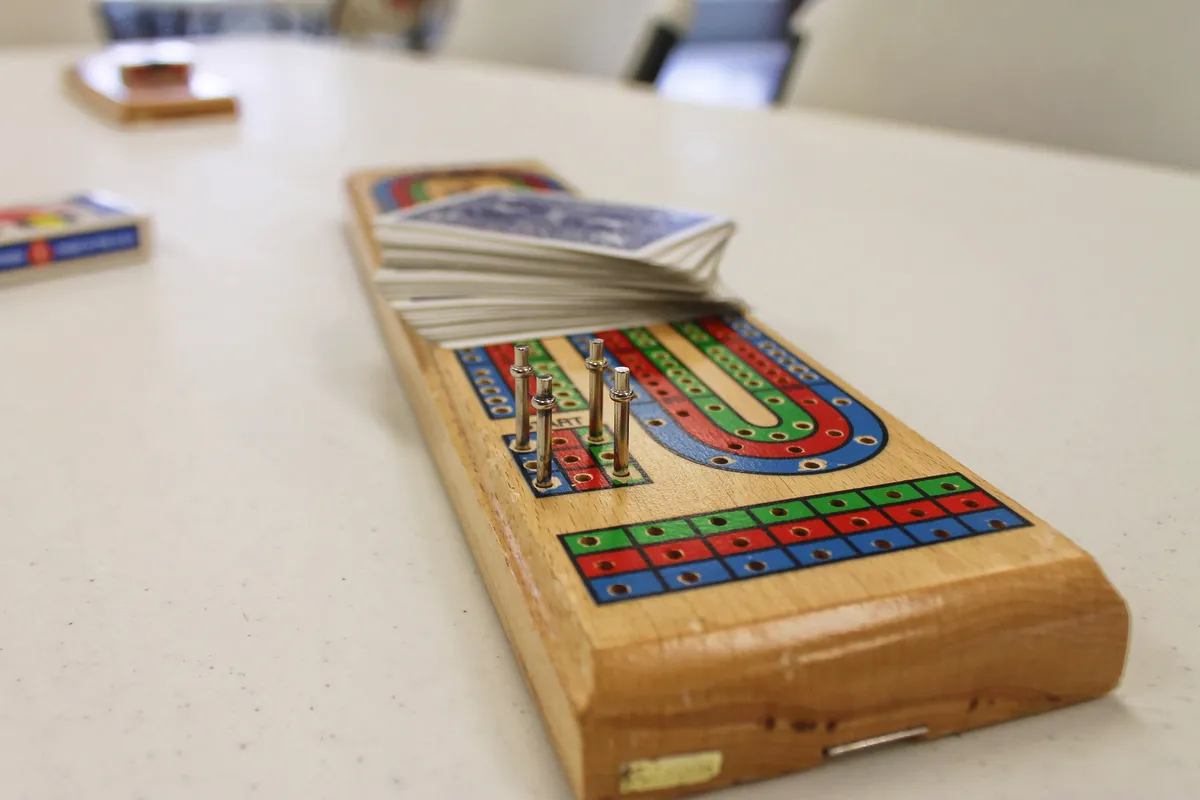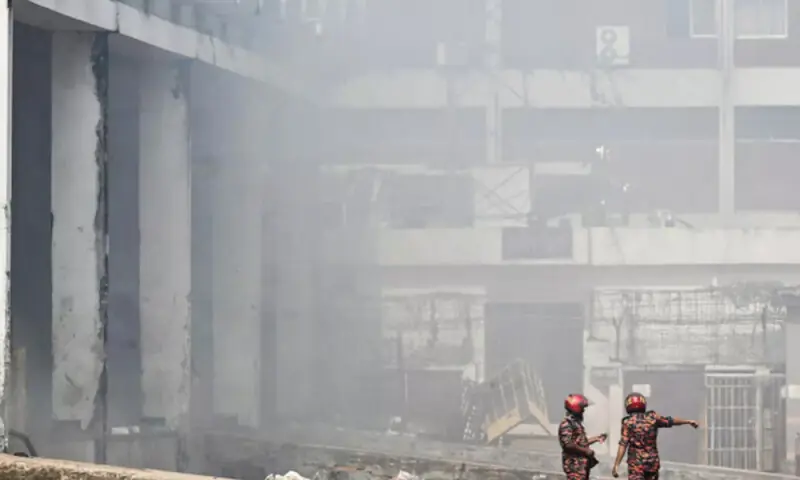Copyright The Oregonian

Mindan Ocon dashed in from her apartment balcony, quickly shut the sliding door and grabbed one gas mask from her dining table for herself and another one for her 3-year-old daughter who had started to cough. Ocon has learned to recognize the signs that mean she needs to act: the metallic clink of canisters on the pavement below or the amplified voice of federal officers warning to clear the area. Even though she moved within seconds, tear gas from the protest outside the U.S. Immigration and Customs Enforcement building still seeped into Ocon’s living room. She scrambled to light incense to mask the acrid odor. Ocon, 32, lives in a corner apartment several floors up at Gray’s Landing, a 209-unit affordable housing complex with 238 residents. It sits kitty-corner across South Bancroft Street from the ICE building — a flashpoint between protesters and federal officers since June. The ICE office has drawn national attention — and larger crowds — since President Donald Trump announced plans in late September to send National Guard troops into the city to quell the protests of his administration’s immigration crackdown. On active nights, it also has drawn tear gas, smoke bombs and pepper balls aimed at the crowds by federal officers, sending toxic fumes pouring into Gray’s Landing spaces. Flash-bang grenades thrown by the officers rattle dishes in the sink. An earthy, metallic smell sometimes lingers long after the streets have cleared. The Oregonian/OregonLive spent a recent evening with people in three separate apartments, seeing how residents are coping with the tumult, listening as they tick off the damaging health effects and documenting the jackhammer-level noise they can’t completely drown out by turning up their TVs. Tenants described sleepless nights, breaking into coughing fits and having the feeling of being constantly watched, with drones skimming past windows, helicopters circling overhead and federal officers standing on the rooftop of the ICE building. Residents have contacted the city, complained to property managers and asked elected officials for help. They can’t easily relocate because of limited income in an expensive real estate market. So people wait, feeling unheard, caught between the tactics outside and lingering irritants inside. Ocon has watched and recorded scenes of arrests, confrontations and dispersals — close enough to hear the chants, bullhorn harangues of officers, all kinds of shouting and the sound of flash-bangs echoing through the neighborhood along the Willamette River south of downtown. On Saturday a week ago, the ICE facility attracted a big group following a No Kings rally that drew 45,000 people to downtown streets. Around 400 to 500 people ended up outside Gray’s Landing. Most protests don’t reach this scale, residents said. Some evenings pass with no more than 50 demonstrators or counterprotesters along the sidewalk on Bancroft Street. Still, the tenants don’t know when tensions might escalate. Even modest crowds have prompted federal officers to issue warnings and fire pepper balls. At one point on this night, Ocon jolted with a scream. Flash-bangs – crowd control munitions that emit piercing light and huge booms – shook the apartment. “It becomes routine,” she said. “You just get used to it. … But the flash-bangs still make me scream because they catch me off guard.” The thump of music penetrated her closed windows and doors, along with yelling and intermittent pops of pepper balls. Sometimes Ocon adds to the noise by heckling the federal officers and counterprotesters from her apartment, earning the nickname “the Balcony Lady.” Ocon said she has lost weight from anxiety and her daughter, Angelise, has suffered burning eyes from the gas. Amid the cacophony, her toddler sat calmly on the couch watching TV and eating fruit snacks. “It scares me sometimes that my daughter can sleep through flash-bangs now,” Ocon said. ‘So much hate going on’ Mindy King placed wet towels below the main door to seal her apartment last Saturday evening, closed all her windows and turned on a store-bought air purifier, as well as a DIY version made with air filters and a box fan. “It cost me around $500 just to make my apartment breathable,” she said. “Unfortunately, many families in the building can’t afford to do that kind of thing on their own.” King, 50, lives in a corner apartment on the second floor of Gray’s Landing facing Bancroft Street with her 13-year-old son, two cats and a 5-month-old puppy. Tear gas has repeatedly entered her apartment, she said. Like other residents, she keeps a pair of gas masks in her living room. Also like others in the building, King often films and streams live video from her balcony to social media to document what unfolds outside. King said she’s also in the process of installing security cameras at her front door and balcony. King described interrupted sleep – not from noise, but from anxiety. “It’s not about the number of people, it’s about what’s going around us,” she said. “… It’s really hard when there’s so much hate going on, the volume of the language and the aggression level that’s literally under my son’s window.” On nights when King anticipates more activity – including after the recent No Kings march – she has her son stay with his father because of safety concerns. She said she’s faced harassment from what she described as “agitators” who gather across the street that face her son’s bedroom window. “I’ve never told my son he couldn’t come home until this year in this current situation,” she said. “I don’t know what the end game looks like. … These are moments that I know a lot of the residents here feel really alone because their voices can’t be heard.” Earlier this summer, a resident in the building sued the city of Portland, arguing that local police should be required to enforce nighttime noise limits around the ICE office. In court filings, the resident said she had called emergency dispatch more than 40 times since demonstrations began but received little relief from the sound onslaught. A Multnomah County judge declined to compel Portland police to intervene, ruling that officers aren’t legally obligated to enforce noise ordinances in these circumstances. The judge, however, said police could use discretion to curb excessive noise late at night. Under city code, sound in open-space zones is meant to stay near 50 decibels after 10 p.m. The Oregonian/OregonLive has been monitoring noise levels on South Bancroft Street near the ICE building since Oct. 10, using a downloadable cellphone app for workplaces that was created by the U.S. Centers for Disease Control and Prevention. Readings have frequently exceeded allowable levels, hovering around 70 decibels but occasionally reaching 90. A week ago, the noise levels measured from 10 p.m. Saturday to 1:30 a.m. Sunday inside an apartment at Gray’s Landing ran between 50 to 70 decibels. Measurements taken from outside, on a balcony, during that period measured much higher, at one point going above 110 decibels, similar to a jackhammer or a rock concert. ‘Crisis at their doorstep’ Built in 2012, the U-shaped apartment building offers space for veterans who have experienced homelessness and others who meet income guidelines. The nonprofit REACH Community Development runs the complex and has scrambled to blunt the health and quality-of-life impacts on the residents. The six-story building also houses the nonprofit’s headquarters. CEO Margaret Salazar said the agency has spent at least $150,000 on relief measures, including renting industrial air filters to put in hallways and replacing the building’s HVAC filters. She said REACH staff have installed sticky pads, placed like doormats at the main entrance on South Lowell Street, meant to catch the powdered tear gas residue and keep chemicals from being tracked inside on people’s shoes. Tenants can pick up earplugs at the office. REACH also has contracted with Echelon Protective Services to have a person monitor the building in the evenings and weekends, not as security, Salazar said, but to “make sure that folks aren’t getting inside when they shouldn’t be getting inside.” “The big thing that we’re hearing from folks is that the noise is really challenging – the ICE agents are using flash-bang tactics and the helicopters go on all night long,” she said. “We hear about the tear gas or whatever other substances are being released, especially at night, that are getting into residents’ units.” Salazar said people often find debris from pepper balls and residue from smoke grenades on the sidewalks outside the building. The tenants and REACH staff who work at the building all have to deal with the aftermath of the federal response, she said. “Residents are dealing with this crisis at their doorstep, that the federal government has brought upon us,” she said. “Ultimately, we need the federal agents to stop deploying these harmful agents in a residential area.” Salazar said REACH hasn’t directly contacted or appealed to the U.S. Department of Homeland Security to stop its use of chemical munitions for crowd control because the nonprofit has been working with the city as its main contact and believes the government shutdown will impede communication. Homeland Security officials have declined to detail specific policies and procedures over the use of force or the volume of munitions used in Portland. They didn’t respond to questions about whether federal officers are taking measures to limit chemical exposure to nearby residents or whether they’ve consulted public health experts about repeated chemical use in a residential area. Salazar said her staff has asked city and county officials for additional funding to buy more air purifiers and increase cleaning around the perimeter sidewalks. Mayor Keith Wilson said he’s aware of residents’ concerns and criticized the “indiscriminate” use by federal officers of tear gas, pepper balls and other munitions against demonstrators, calling the tactics “unnecessary when you have people that are peacefully protesting.” While Wilson has “publicly urged” federal authorities to stop or curb the use of the munitions and to follow Oregon’s restrictions on tear gas and crowd control measures, the mayor has “limitations on his ability to control the action of the federal government,” said his spokesperson, Cody Bowman. Bowman said the Portland Housing Bureau this week amended a grant it awarded to REACH to include more money for air purifiers, but he didn’t specify an amount. Bowman said the city has also sent staff to remove trash and graffiti near the ICE facility and Portland police are a regular presence nearby to de-escalate disturbances at the protests. REACH has turned to the general public for help and has set up a fundraising campaign to cover escalating health and security costs, Salazar said. The nonprofit hopes to get enough money to hire public health experts and scientists to advise staff on decontaminating the area and how to better help residents. “We’ve ordered air purifiers for residents, but they’re coming in batches” and aren’t readily available to everyone, she said. REACH has ordered 72 so far and she said the goal is to eventually provide one portable HEPA purifier per unit. “We’d love to be able to do more for residents … beyond what we’re currently doing,” she said. “We don’t have a budget for any of this.” ‘Choking on the gas’ Around 10:30 p.m. last Saturday, bright beams from the rooftop of the ICE office blazed into Lashawnda Shavers’ fifth-floor apartment as she cooked bacon and French toast for dinner. The TV was up, muting the sounds of the helicopter overhead and noise from the streets. Her 23-year-old son who lives with her had left the apartment earlier in the afternoon to stay over at a friend’s house. “I’m always up so late because it’s hard to fall asleep with all that’s going on,” said Shavers, 49. The loudspeaker warnings coming from the ICE building – “This is the federal government” – trigger panic, she said. “Every time I hear that, I know tear gas could be coming,” she said. “The crowds are never so violent they need chemical weapons, but we’re the ones choking on the gas.” Sometimes she steps out on her balcony to yell at the federal officers for shining lights on the apartment building or for surveying the crowd and apartment dwellers with binoculars. Shavers, who has been diagnosed with an autoimmune disorder that has left her with a pulmonary condition, said there are times when she failed to close her windows quickly enough and her apartment has “filled up with tear gas.” She said some nights she’s had to sleep with a gas mask on and hasn’t gotten one of the air purifiers from REACH. “We don’t even feel safe in our own homes,” she said. “This building is full of American citizens … but we are absolutely being treated as collateral damage.” Sven-Eric Jordt, a toxicology professor at Duke University who has studied the health effects of tear gas for over two decades, said people repeatedly exposed to tear gas could face lingering health effects long after protests end, including chronic irritation of the eyes, nose and mouth, coughing, skin rashes and respiratory problems. “We don’t know much about the long-term effects of tear gas,” he said. “There’s very little studies on what happens to a broader civilian population and most of the research is outdated. It would not stand up to modern toxicology techniques.” Despite its common name, tear gas is a powder that settles on surfaces after it’s deployed, he said. He added that the particle size of the powder is so small that most commercial filters aren’t sufficient to filter them out and can contaminate HVAC systems in a building spreading the powder even more. “If it’s not washed away or blown away, it kind of falls to the ground and forms a type of dust,” he said. “It can blow into surrounding buildings if the windows are open or go into air conditioning and accumulate indoors and on surfaces.” Without professional cleanup, “it can sit there for weeks or months,” he said. Children are especially vulnerable because “they are closer to the ground and inhale more” and small injuries to their lungs can have more serious effects, he said. A 2021 study by researchers at Kaiser Permanente Center for Health Research surveyed over 2,200 adults who had been exposed to tear gas during the 2020 racial justice protests in Portland. Researchers found that a majority of respondents reported experiencing physical and mental health effects, some for days and even weeks after. Dr. Ilya Ivlev, who led the study and is now a professor at Oregon Health & Science University, said his team found that more than half of respondents who menstruate reported irregular menstrual cycles after tear gas exposure. “I think one thing people need to understand is that tear gas is not as safe and non-lethal as claimed,” he said. “It’s a chemical weapon that was banned in warfare in 1993 and now it’s used on civilians.” Ivlev said that the chemical ingredients of the substances used along with tear gas are proprietary but often have volatile chemical compounds and heavy metals. ‘I couldn’t eat’ Ocon, the resident with the 3-year-old, said she doesn’t let her daughter spend much time on the balcony, even though her little girl begs to see the people in the inflatable costumes that have become a signature of the Portland resistance. “She wants to go outside and she’s drawn to the music and likes watching the people in costume dancing, like she loves seeing the chicken,” she said. In late July, Ocon said she took her daughter to see a pediatrician at OHSU Doernbecher Children’s Hospital after she “screamed and cried” of a painful burning feeling in her eyes. Her daughter’s medical chart shows doctors attributed it to “daily exposure to aerosolized chemicals and smoke used in crowd control at the ICE protests.” Ocon said her health has suffered, too. She’s lost nearly 30 pounds since June, her hair is thinning and she’s experienced intense cramping and increased bleeding during menstruation, she said. “There are certain chemicals they use, like tear gas … and then there’s this smoke that’s red, green or orange that comes with it that all burns when I inhale it and I feel like I’m dying inside,” she said. “My stomach is constantly hurting and there are some days when I couldn’t eat because I wasn’t hungry… I just feel so sick.”



